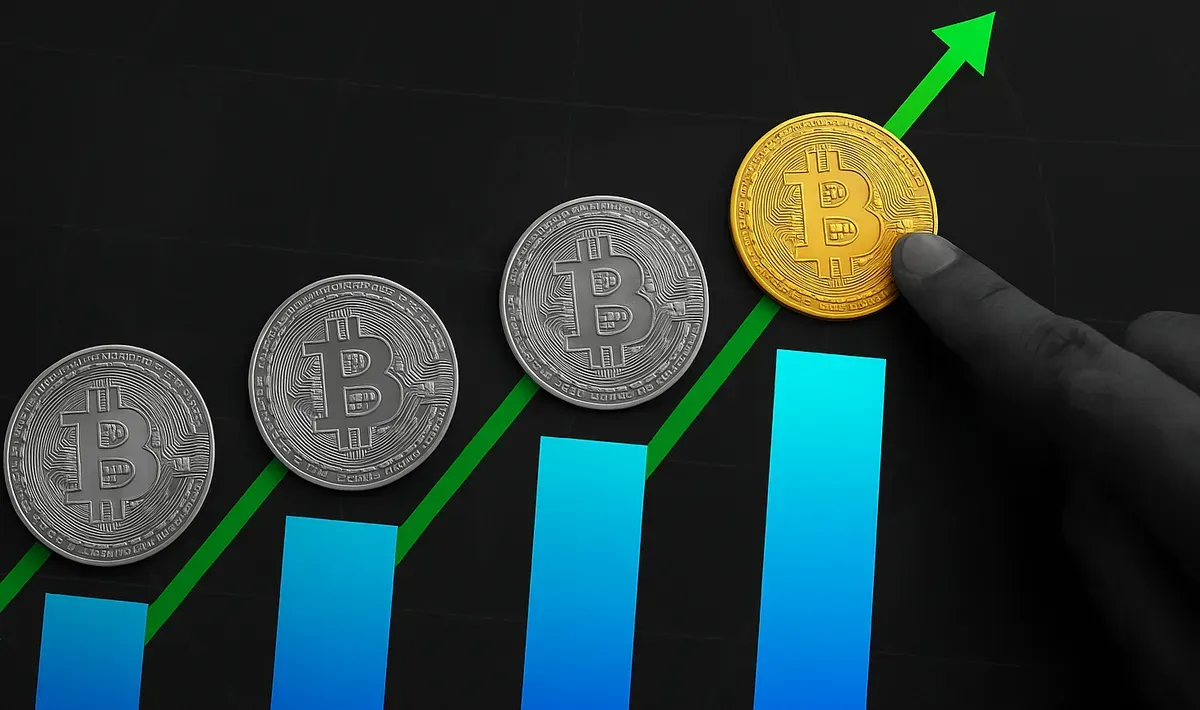Binance Captures 50% of Bitcoin Spot Market Amid Low Volumes

In a remarkable turn of events, Binance has solidified its position as the leading cryptocurrency exchange, capturing nearly 50% of the Bitcoin spot market share as overall trading volumes across the industry plummet. This shift highlights Binance's resilience and adaptability during a challenging market environment.
Key Takeaways
- Binance's share of Bitcoin spot trading volume surged from 33% to 49% by the end of Q1 2025.
- Overall Bitcoin trading volumes dropped 77% industry-wide, from $44 billion to $10 billion.
- Altcoin trading on Binance also increased, with market share rising from 38% to 44%.
- Binance has become the primary liquidity hub during periods of market stress.
Binance's Market Dominance
Recent data from cryptocurrency analytics firm CryptoQuant reveals a significant increase in Binance's market share during a period of declining trading volumes. As the overall Bitcoin spot trading volume fell dramatically, Binance's share grew, indicating a consolidation of trading activity on the platform.
- Bitcoin Spot Trading Volume Decline: From a high of $44 billion in early February to just $10 billion by the end of March 2025, representing a staggering 77% decline.
- Altcoin Trading Volume: Similarly, altcoin trading volumes dropped from $122 billion to $23 billion, a reduction of over 80%.
Increased Market Share During Volatility
Despite the overall decline in trading volumes, Binance's proportion of trading activity has increased significantly. The exchange's share of daily Bitcoin spot trading volume rose from 33% in early February to 49% by the end of March 2025.
- Altcoin Market Share Growth: Binance's share of altcoin trading volume also increased from 38% to 44% during the same period.
- Flight to Quality: This trend suggests that traders are consolidating their activities on Binance, seeking the liquidity and security of the largest exchange during volatile market conditions.
Binance as a Liquidity Hub
During periods of heightened market volatility, Binance has emerged as the primary liquidity provider. For instance, when Bitcoin experienced a sharp correction, Binance's trading volumes surpassed those of all other exchanges combined.
- Trading Volume Spike: During a recent market correction, Binance's share of altcoin trading volume temporarily spiked to 64%, indicating its critical role in providing liquidity.
- Investor Behavior: Analysts note that the concentration of trading activity on Binance reflects a preference for platforms with robust infrastructure and security measures.
Resilience of Altcoin Trading
Despite the broader market slowdown, certain altcoins continue to show relatively high trading volumes on Binance. Tokens like BNB, TON, and EOS have maintained significant trading activity, underscoring Binance's position as the preferred platform for both mainstream and alternative cryptocurrency trading.
Implications for Traders and Investors
Binance's growing market dominance presents both opportunities and challenges for cryptocurrency traders and investors:
- Enhanced Liquidity: Increased trading concentration on Binance typically results in improved liquidity and tighter spreads.
- Institutional Preference: The migration of trading activity to Binance may reflect institutional investors' preference for established platforms.
- Market Impact: With nearly half of all Bitcoin spot trading occurring on Binance, price movements on the exchange may increasingly influence the broader market.
- Selective Trading Opportunities: The resilience of certain altcoins on Binance could present trading opportunities even amid overall market contraction.
Conclusion
The latest trading volume data confirms Binance's position as the undisputed leader in cryptocurrency exchange services, particularly during periods of market uncertainty. As overall trading activity declines, Binance has managed to not only maintain but significantly increase its market share, reflecting its operational stability and the cryptocurrency market's tendency toward consolidation during reduced activity. For traders and investors, understanding this dynamic is crucial for developing effective strategies in the current market environment.
Sources:
- Binance’s Bitcoin spot market share rose from 33% to 49% by Q1 2025
- Overall Bitcoin spot trading volumes dropped 77% ($44B to $10B)
- Binance’s altcoin dominance reached 78% by Jan 2025
- Coingecko data for April 2025 further confirms Binance’s unparalleled position in the crypto exchange landscape
More news:













